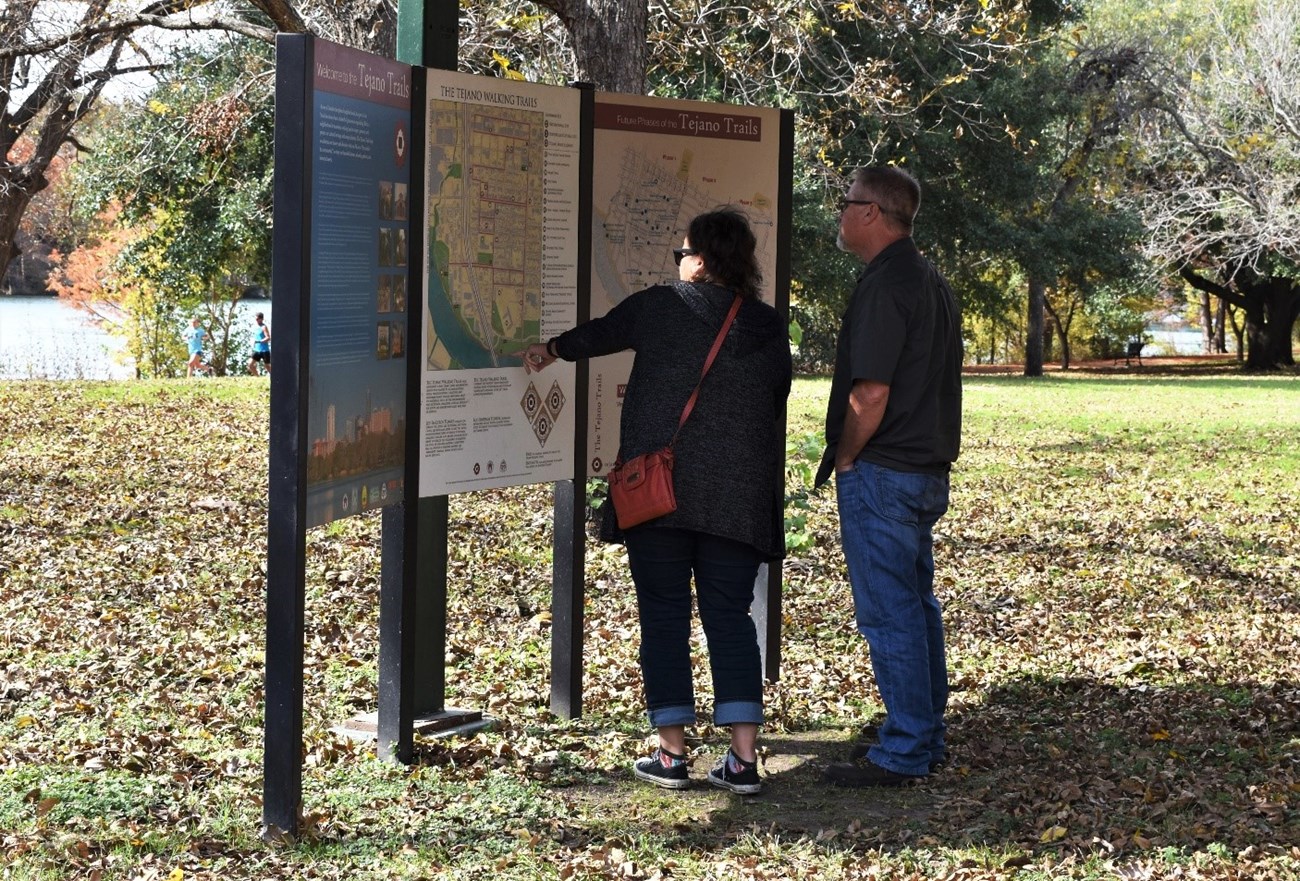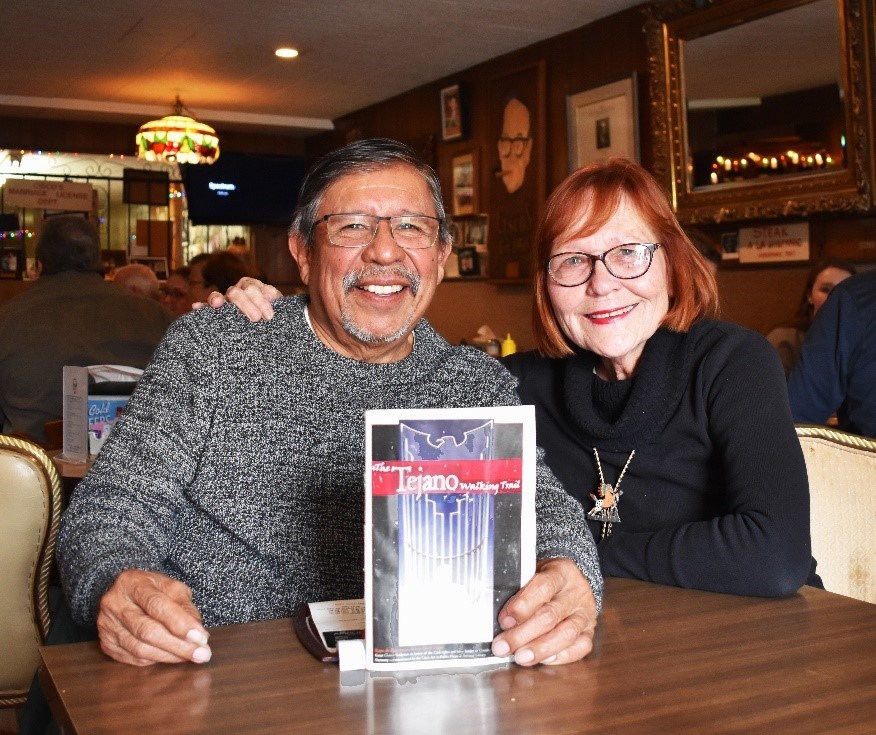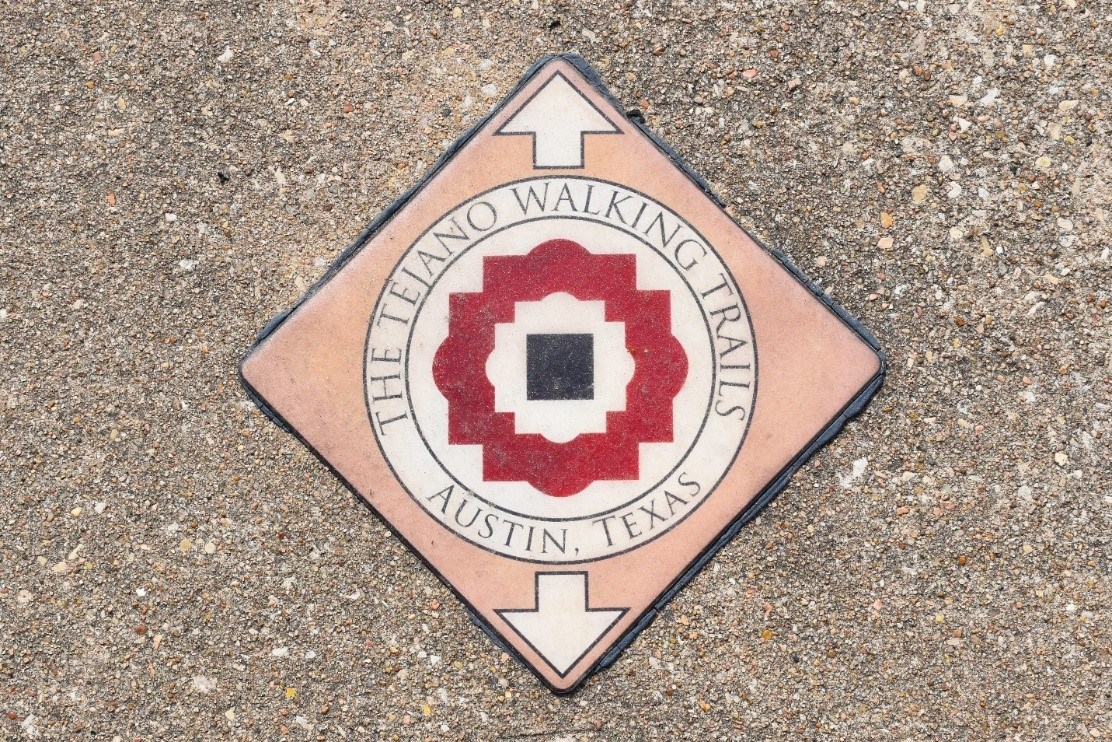Last updated: March 2, 2022
Article
The Tejano Trails: Austin’s Cultural Tour de Force

By Christian Gallegos-Alarcon
When thinking of outdoor recreation, one may not think of historic preservation or storytelling embedded in a trail but the Tejano Trails in East Austin, Texas, proves otherwise. With the city’s growing population, preserving the vibrant culture of a changing community became more important than ever.
In 2013, the East Cesar Chavez Neighborhood Planning Team, an advisory board to the Austin City Council, applied for technical assistance from the National Park Service. The team sought to not only highlight the diverse history of East Austin, but also promote a healthier lifestyle by using existing neighborhood trails as a starting point.
Community leaders and volunteers had been a driving force of the existing trails, the 5.6-mile Trail of Tejano Music Legends and the 4.9-mile Tejano Healthy Walking Trail. Designated as National Recreation Trails, the paths highlighted nearly 40 landmarks and Tejano music legends from East Austin but were difficult to find and navigate. In collaboration with the National Park Service - Rivers, Trails and Conservation Assistance program, the planning team developed the “Tejano Trails,” an urban trail network, just 10 blocks from the Texas State Capitol, that connects both trails.
Justin Bates, a former project specialist with the National Park Service, was excited to work on a trail that combined recreation with cultural and historic preservation. He joined the planning team and worked with the community in trail design and implementation. Already having developed and distributed 5,000 brochures about the trail to garner support, the community was informed about and invested in the project.

“They [the community] had developed a series of trails and sites scattered throughout this neighborhood in East Austin,” Bates said. “They had research that was shared through a brochure, but there wasn’t anything on the ground to follow.”
The two trails were originally developed with an emphasis on historic and cultural preservation, rather than focusing on the experience of a trail user.
“Our walking trail was originally designed so that if people were coming into the neighborhood to bulldoze our homes - if they knew it was a historic neighborhood, they would be more likely to save the building,” said Lori Renteria, the Tejano Trails coordinator for the East Cesar Chavez Neighborhood Planning Team. “We had only focused on buildings but didn’t include the people and events.”
To determine how the neighborhood and potential visitors could interact with the Tejano Trails, a steering committee led by Renteria and Bates was formed. With support from the Austin Parks Foundation, the City of Austin, the Mexican American Cultural Center and others, the Tejano Trails Steering Committee came together to refine trail concepts and build support for the trail network.
In the fall of 2013, steering committee members distributed a community survey to identify residents’ and visitors’ awareness of the trails, outdoor recreation habits and suggestions for trail improvements. More than 240 people responded to the survey and identified top priorities such as preserving the cultural history of the neighborhood, increasing accessibility and ensuring that the trails were navigable.
Based on the community’s needs, the Tejano Trails Steering Committee developed a three-phase plan that divided the adjacent neighborhoods into small geographic areas where the trails would be developed as resources and funding became available. With a $75,000 grant from the City of Austin and support from the National Park Service, the Tejano Trails began to take shape.
“I can positively say that without Justin Bates and the National Park Service – Rivers, Trails and Conservation Assistance program, the Tejano Trails would have never gotten off the ground because we have no knowledge at all about how to plan for a walking trail. The wayfinding, signage, it all helped us develop this self-guided tour,” Renteria said.
During the first and second phase, the steering committee focused on trail design and building a website. Bates worked with community stakeholders to identify trailheads, establish shorter routes and identify community needs for signage and wayfinding. Partners then worked together to develop a main trailhead kiosk, trail markers, interpretive signage, and an online tour via Vamonde, a mobile application that allows users to navigate trails while learning about the sites along the way. At the kiosk, visitors have the option to follow the route for the original Trail of Tejano Music Legends or the Tejano Healthy Walking Trail.
The National Park Service helped establish design strategies, including the Tejano Trails signage which is used for wayfinding along the route.

With the first two phases completed, phase three will focus on the eastern portion of the neighborhood.
“This [trail] is used so extensively. Lady Bird Johnson is the one who believed that parks and nature were a need for all people, regardless of status. She helped envision this,” said Michele Owens, a community resident who frequents the trail. “You could not imagine the thousands and thousands that come here.”
The Tejano Trails does not only provide a trail network to walk, bike and exercise. It is a labor of love from the community that will tell the story of the rich history and culture of the neighborhood for generations to come.
Though there is still work to be done, the Tejano Trails is preserving the legacy of East Austin in a time where the community is quickly changing. Due to an increasing population, the historic community is fighting the impacts of gentrification.
"If we can’t stop the bulldozers, at least there’ll be a legacy of what once was a very strong, close-knit Mexican-American community with a whole lot of history," Renteria said in an interview with Austin’s local NPR Station.
To learn more about the Tejano Trails, visit their website at http://www.tejanotrails.com/.
